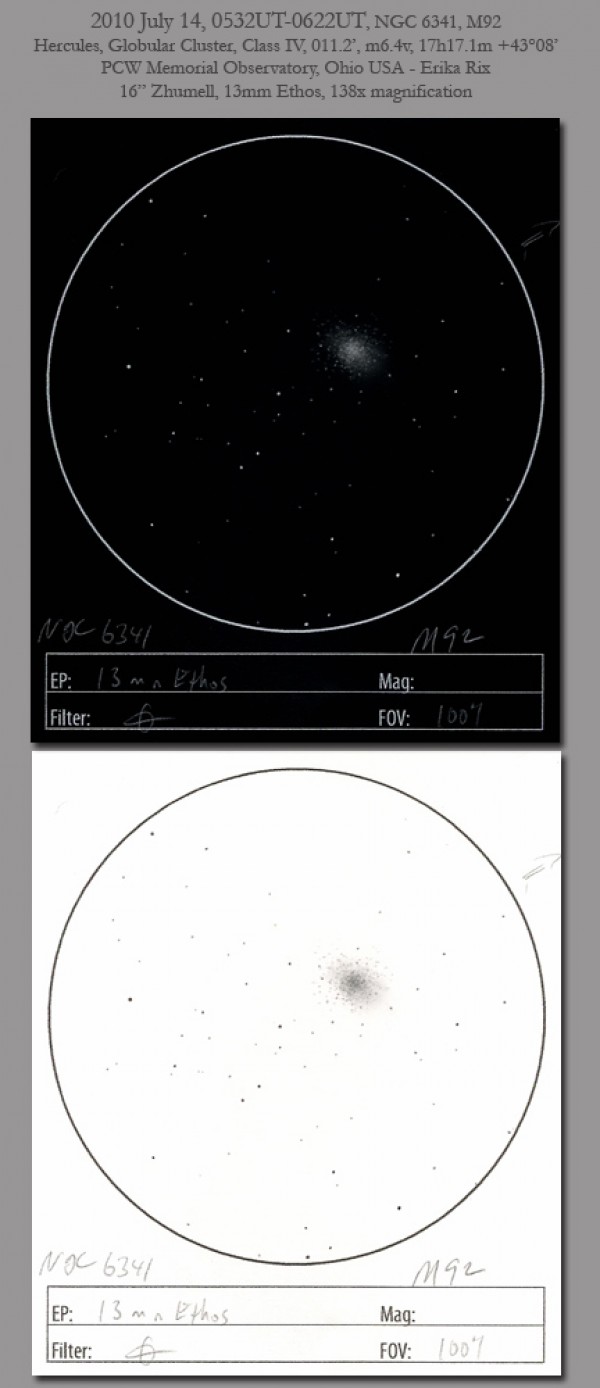2010 July 14, 0532UT-0622UT
NGC 6341, M92 Constellation Hercules, ~25,000 LY away
Globular Cluster, Class IV, 011.2’, m6.4v, 17h17.1m +43°08’
Luminosity 150,000 suns, diameter 80 light years
PCW Memorial Observatory, Ohio USA – Erika Rix, pcwobservatory.com
16” Zhumell, 13mm Ethos, 138x magnification
H: >90%, Temp: 19.3°C
Johann Bode discovered this globular cluster in 1777. Charles Messier
added it to his catalog 1781. Reading about this cluster in my NSOG vol.
2, it’s interesting to find that this cluster is only about 60%
luminosity of the globular cluster M13 found in the keystone of
Hercules. The stars lack the abundance of iron and other elements
heavier than H and He, which means that it most likely would have been
formed before those heavier elements were introduced into our Galaxy.
Even though globular clusters are the oldies of our Galaxy, the
deficiency of a rich iron and heavy elements makes M92 even older by
globular cluster standards.
M92 appeared almost elongated and irregular with a very dense bright
core and resolved abundance of stars that spread further from each other
moving outward.
Sketch created scopeside with white photocopy paper, #2 pencil and an
ultra fine black marker.
Erika Rix

Erika.
Very fine detail work.
Scott.
Erika,
A beautiful sketching capture of a fine globular cluster.
Frank 🙂